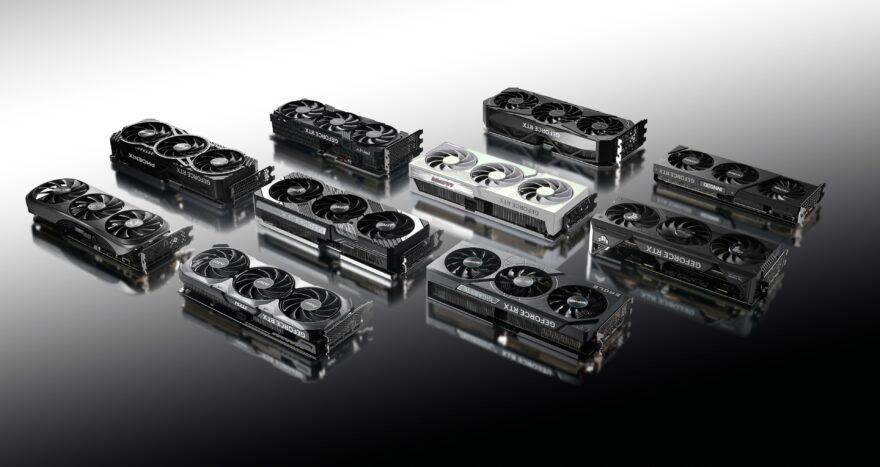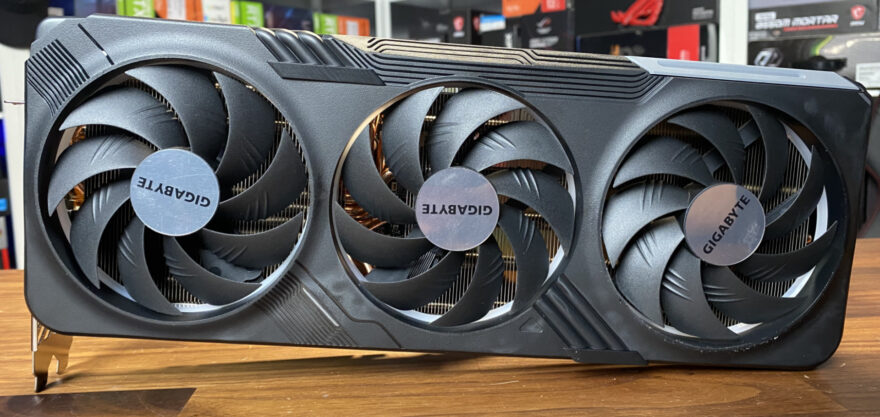NVIDIA RTX 4070 Ti Review
Peter Donnell / 2 years ago

Today sees the launch of the RTX 4080 12GB. Sorry, 4070 Ti 12GB. A card that has had a LOT of bad press, even before it launched, and we’ll be going through exactly how it performs today. It’s also worth addressing the elephant in the room. This card, the 4070 Ti was the card that never was, or never should have been or kind of was, but then wasn’t, and then was something else. It was a mess from its first inception, and for one reason. Based on consumer feedback, and the fact that this was going to be labelled as an RTX 4080 with 12GB of GDDR6X memory, the general consensus was that the gaming community weren’t happy to have the wool pulled over their eyes, so NVIDIA went back to the drawing board and came up with the same product, but now branded as a 4070 Ti. The card it kind of should have always been and for one big key reason; the GPU core itself.
While the RTX 4080 uses the AD103 GPU, the now 4070 Ti uses the AD104 core instead, and that was the first big sign that NVIDIA was trying to push a product that should have never been part of the 4080 range in the first place, let alone coming in at $899 MSRP.
RTX 4070 Ti
So with that out of the way, let’s talk specs. So like the other 40 series cards, it’s based on the Ada Lovelace architecture on TSMC’s 4N process node, so you get all of the latest features that the AD family bring to the table including the latest generation RT and Tensor cores of which we’ll go through Ray Tracing and DLSS, including DLSS 3 performance a little later on. With the AD104 GPU, we now have a GPU core that comes in at 295mm² and packs 35.8 billion transistors which is just over double the amount found in the 3070 Ti, which was also on a larger die size.
The card also comes with 12GB of GDDR6X memory which is a step up from the 8GB on the 3070 Ti, but still not enough to get close to the 20GB of memory that the new AMD 7900 XT packs, and considering now we’ve been informed that the pricing on the 4070 Ti is $799 instead of the $899 USD that the same product, different name, 4080 12GB was going to be launching for, it’s definitely at a more palatable level now, and undercuts the 7900 XT by $100. The 4070 Ti also drops the memory bus down from 256-bit on the 3070 Ti to a 192-bit bus, though again, as it’s a different architecture, this means very little in the grand scheme of things.

So $799, it’s definitely a better proposition than the “cancelled” 4080 12GB, and for that money, you get 7680 CUDA cores, 240 texture mapping units, 80 Render Output Units, 60 RT cores and 240 Tensor cores, and a significant bump in the L2 cache up to 48MB. What’s interesting, and something we found on the RTX 4080 is that compared to the predecessor, in this case, the 3070 Ti, some of the specs, such as the ROPs are actually less on this card compared to last generation, but as we know from the rest of the 40 series cards, it’s not just a numbers game and there’s a lot more to it than that.
Speed-wise, the reference clock speeds of the 4070 Ti come in with a base clock of 2310MHz, a boost clock of 2610MHz and a memory clock of 1313MHz or 21Gbps Effective though AIB models may of course differ which brings me onto the card I have here today which is the Gigabyte RTX 4070 Ti Gaming OC. We will have a separate review going through the Gigabyte card, what it has to offer in terms of cooling, power and performance along with overclocking shortly, while today sees us focussing purely on the AD104 GPU and what that’s able to do from a gaming performance standpoint.

So to touch on the Gigabyte card briefly. It’s what you’d expect from a Gaming OC card in terms of the style and design and though you could argue that the 70 Ti range of cards have always been more aimed at the mainstream gaming market, and those wanting to play at 1440p or to dabble in gaming at 4K, it’s still a very large card coming in at 336mm long, 140mm tall and will take up two and a half slots in your case. In typical 40 series style, it uses a single 12VHPWR power connector as expected a reference 4070 Ti has a 285 Watt TDP with a recommended 600W minimum PSU. Obviously, AIB cards may have higher power limits which can be pushed through overclocking, which is something we’ll address in our further content when we go through multiple models.
The Gaming OC model here, as you’d expect will command a small premium over a reference model, of which NVIDIA isn’t releasing a Founders Edition for this series, but AIB’s will have the option to release their own cards at MSRP. For Gigabyte, it will likely be an Eagle variant, while the Gaming OC normally demands another 10% or so more cost on top.
For in-depth features and specifications, please visit the official product page here.
Video
If you want to see our full video going through this, you can do so below.



















